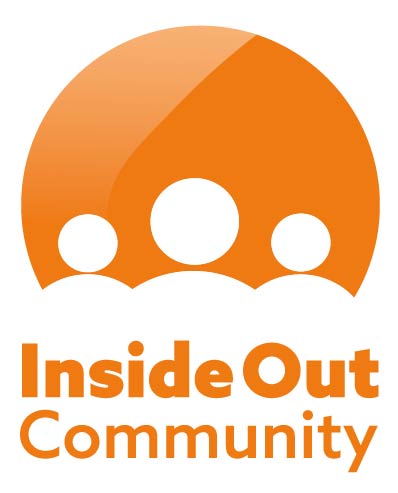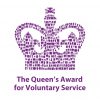On Finding You Have Wings
On Finding You Have Wings
Perhaps it is wise to leave the question ‘what is creativity’ alone, and simply celebrate it as a vital part of human nature; as Julia Cameron author of The Artists Way says ‘at the heart of creativity is mystery’. There is always the fear that if we analyse it too much, we will impede it in some way; that it will become a more conscious, intentional act, rather than something that springs free from our psyche. But we can say something about it’s nature and what encourages or discourages our creativity
Perhaps the first thing to say is that everybody has the potential for creativity; whether we see that as God given, or part of our DNA there can be little doubt that it is a gift that is part of our human heritage. It is not an attribute that is expressed only in the arts – where it is perhaps most visible, but also in the sciences and in life in general. It is the mainspring of our evolution as a species – we would not have become such a technically advanced species without it. Perhaps the urge to create is a form of self expression that arises out of necessity – we create things because we solve problems that way! There is of course a shadow side to this, not all creative acts are constructive many are destructive; think of the atom bomb!
We live in times in which, for many people, creativity is dulled by the frenetic whirl that is modern life and by it’s hedonistic, materialistic preoccupations. While there can be an excitement in the driven life, for many the cry stop the world I want to get off has never been more heartfelt. In the rush of life we give little time or thought to our creativity or if we do it is often to disown it. In our working lives there is often little room for creativity, with top down beaurocratic management determining working practices and systems. We give little thought to the creation of ourselves and our own lives but as John O’Donehugh says so elequently ‘each of us is the artsit of our our days’. That we can create something meaningful and satisfying from our lives is a both daunting and freeing at the same time; a sense of freedom but also a recognised responsibility for who and what we are. Some would argue that the meaning of our lives is in that developmental impertative which we share with all nature – that is to become what we can become! While it is true that the lives we live may subject us to circumstances that are disabling rather than enabling, nevertheless, to become more fully who we are remains our ultimate creative task in life. All therapy is to do with this creative unfolding; it is process of re-authoring or re- picturing our lives so that we may stop living in distressed filled, problematic ways and move more freely towards a desired way of being.
Of course no amount of therapy will smooth our lives out; free us from the suffering that is part of being human. Those emotional turmoils can be and often are a locus for creative energy and expression in our artistc lives. Creation comes out of chaos not a placidity and contentment, as Nietieze famously said out of chaos is born a dancing star. We may seek to express through art, in a way the spoken word cannot ,the emotional landscape of human life, the desolate and the sublime. We may seek to read that landscape better so that we can navigate it more easily. Or perhaps we may find in the arts a release or diversion from the pain of living. But it would be a mistake to assume that it is in troubled states of mind we are necessarily at our most creative. It is a question of degree. It is hard to find the energy and motivation, if we are emotionally shut down; or release our imagination from it’s bleak prison if we are too depressed. It is hard to free ourself from fearful preoccupations and give ourselves to the creative process if we are too anxious. It is hard to give ourself to the reality of the creative moment if we are lost and discomforted in a bewildering extra-ordinary reality. But when these states of mind lessen their hold on us, then they can be worked with creatively. Then the darkness and disharmony within us can be channelled into powerful images, transformed into light and harmony or warded off by giving our minds to creative action . We go digging for the solace of light and beauty in our art.
There is something in a creative life, be that expressed through art, drama, music, or dance, that brings with it vitality; as Mathar Graham puts it: a life force and energy, a quickening expressed through you and that is unique to you. No wonder people like Rilke say that we should honour our creativity and make it the centre of our lives. Creativity reminds us we are alive, enagaged in this difficult wonderful journey that our life is. Life beats down and crushes the soul but art reminds us we still have one. That inner fire says Edith Sodergram is the greatest thing that mankind possesses.
There can be something spiritual about the arts. Though a poem, a piece of music, or a painting may not have an explicitly religious theme it neverthe less connects us with something transcendent, something deeper, beyond the ordinary reality of everyday life. It contains a certain truth and beauty. Jung spoke about the power of images to express deeper human experience and our authentic self. These images reside in our unconscious and express themeselves in our dreams but also in our art. They are symbols or message carriers that reveal the deeper meaning of our lives and a fuller truer self. We know when something has soul – a piece of music, a poem, a painting, it resonates with us, and as Rumi says when you do something from the soul you find a river moving within you – a joy.
You do not need to be a trained artist to have a creative life – part of the problem is that in modern times we have professionalised all of the arts to the extent that we have devalued creative expression in our own lives; denied our own talents and creative impulses and have projected them onto ‘the artist’. Part of the raison d’tere of Inside Out is to encourage people to reclaim their creativity and make a creative life the centre of their lives; to allow their energies to to flow into whatever form their creative interest and endevour takes: gardening, quilting, cookery, mosiacs, music, poetry, dance or the visual arts, and allow it to enrich life. What is important is being prepared to take risks, to explore, to be pepared to make mistakes, all art starts as a leap of faith. I am not a trained sculpter but I find what is satisfying in my work comes – just comes, an idea, may be altered into something more in the process of creating. We have to tolerate the anxiety of a blank page, the empty canvas, the formless clay. Henri Mattise said creativity takes courage you have to be prepared fail and what risks he took with his extraordinary ‘cut outs’ towards the end of his life; or as Becket says, in art as in life we have to be prepared to fail, try again, fail again and fail better.
Copyright Peter N. Watkins (2014)

